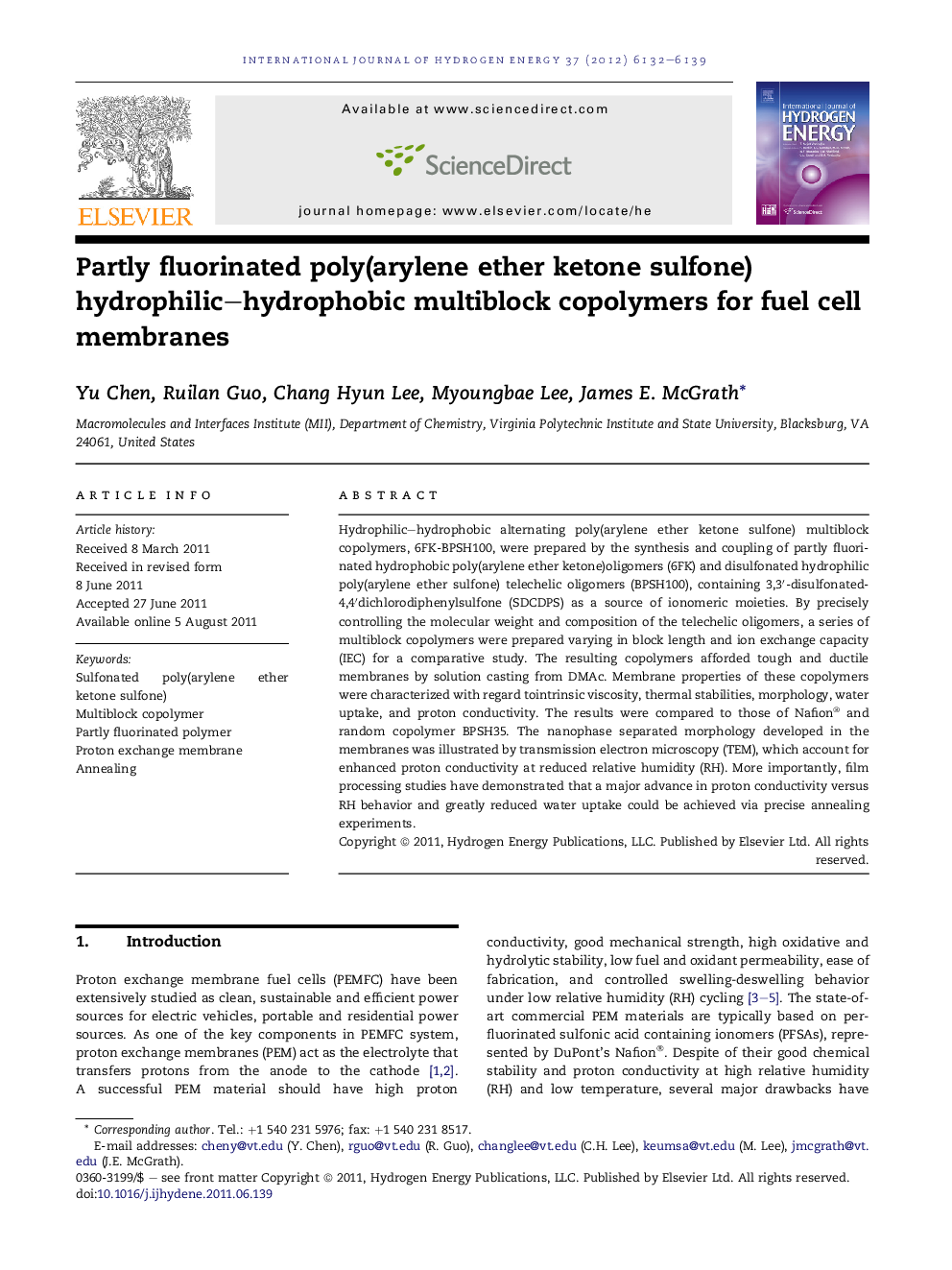| Article ID | Journal | Published Year | Pages | File Type |
|---|---|---|---|---|
| 1276907 | International Journal of Hydrogen Energy | 2012 | 8 Pages |
Hydrophilic–hydrophobic alternating poly(arylene ether ketone sulfone) multiblock copolymers, 6FK-BPSH100, were prepared by the synthesis and coupling of partly fluorinated hydrophobic poly(arylene ether ketone)oligomers (6FK) and disulfonated hydrophilic poly(arylene ether sulfone) telechelic oligomers (BPSH100), containing 3,3′-disulfonated-4,4′dichlorodiphenylsulfone (SDCDPS) as a source of ionomeric moieties. By precisely controlling the molecular weight and composition of the telechelic oligomers, a series of multiblock copolymers were prepared varying in block length and ion exchange capacity (IEC) for a comparative study. The resulting copolymers afforded tough and ductile membranes by solution casting from DMAc. Membrane properties of these copolymers were characterized with regard tointrinsic viscosity, thermal stabilities, morphology, water uptake, and proton conductivity. The results were compared to those of Nafion® and random copolymer BPSH35. The nanophase separated morphology developed in the membranes was illustrated by transmission electron microscopy (TEM), which account for enhanced proton conductivity at reduced relative humidity (RH). More importantly, film processing studies have demonstrated that a major advance in proton conductivity versus RH behavior and greatly reduced water uptake could be achieved via precise annealing experiments.
► Synthesis of partly fluorinated hydrophobic oligomers and hydrophilic oligomers. ► Synthesis of poly(arylene ether ketone sulfone) multiblock copolymers. ► Distinct nanophase separated morphology of copolymers. ► Higher block lengths led to better proton conductivity. ► Major advance in proton conductivity via precise annealing experiments.
